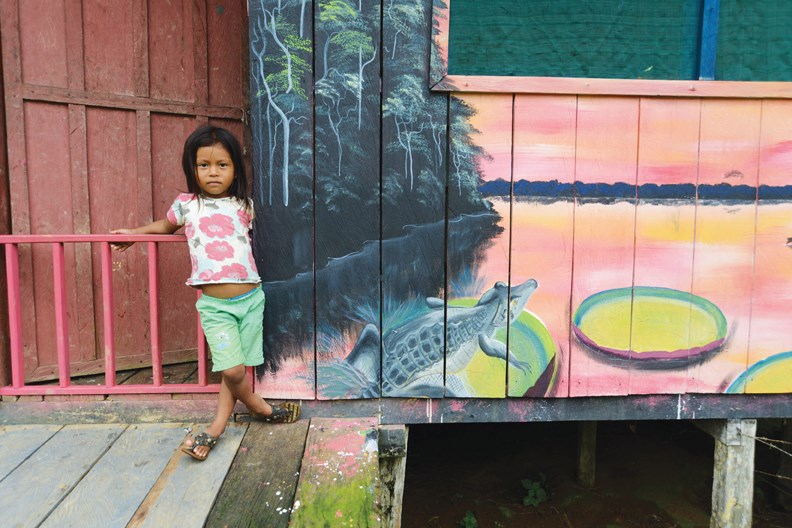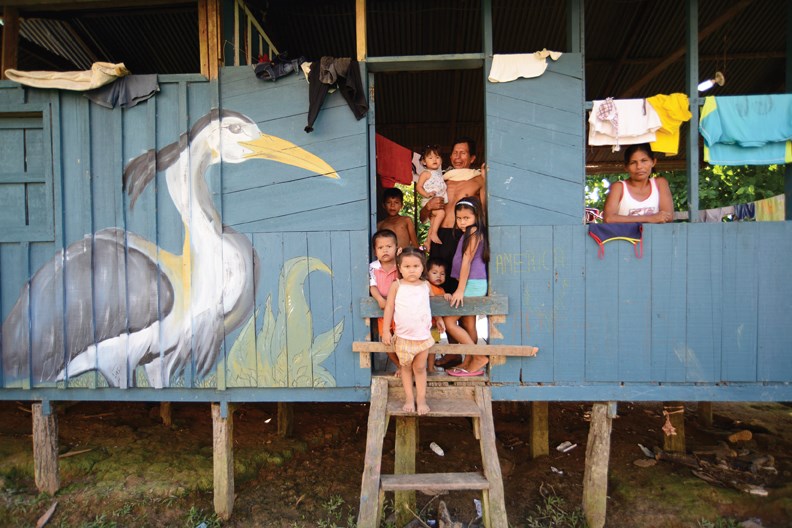As you read this in April, artist Diego Samper of Gibsons is winging his way back to his second home along the Amazon River where he and Marlene Samper run an eco-friendly lodge west of the Colombian town of Leticia, beside a forest reserve and near several indigenous communities.
The project is called Calanoa Amazonas, and the Sampers offer art and nature workshops to visitors from Europe and North America, including some from the Sunshine Coast. This is no five-star hotel for the rich; it’s a small settlement that seeks to live in harmony with the community of local people. The low-impact buildings were designed by Diego, combining traditional techniques with a contemporary approach, using local materials and resources, such as woven palm leaf roofs and walls.
On the Coast we know Diego for his involvement with Deer Crossing, the art farm, as an artist in the Roberts Creek Arts Festival, and for other innovative projects including an original art film, Panopticon. Recently he was invited to France to a cultural institute and to the Darwin Ecosysteme, a collaborative creative space, to present a talk on the poetics of nature using his photography and video.
The Sampers lived in the Amazon prior to coming to Canada, where Diego worked as anthropologist and stellar photographer. His knowledge of this relatively untouched part of the Amazon is vast.

“The Amazon is a single organism,” he says. “Everything is connected. You cannot just take out a certain area.” A tour of the region is all about biodiversity – the Amazon contains one half of the living species of the planet in plants, animals and even bacteria. Everything depends on it.
While on the site the Sampers have been involved with a colourful art project. The people of the nearby village are not isolated from the world; they have had contact for the past 500 years, but they have retained their language, their story-telling and thus their culture. Traditionally they were painters using tree bark for their canvases, and a few years previously the community asked for support in reviving their art to paint their own wooden houses in the village of Moncagua. They wanted them to be more attractive, and also they wanted to mark their homes with their family symbols – it might be a fish, a monkey or an iguana. A non-governmental organization was founded and a project was organized by the Sampers to receive donations from companies who could help.
The local artists started work, and before long the homes displayed brightly painted murals.
“It was a carnival of colour,” Samper said. Other projects with a cultural tradition were revived – ceramics, for example, fired in a kiln made from a 55-gallon metal barrel, lined with bricks.
“It worked well,” he said, “and they kept their tradition of singing to the spirit of the earth to ask permission to use the clay.” Designs that would have been lost were revived, and the craftspeople took up carving as well, another traditional art. The next step this year is to involve schoolchildren in the arts.
Samper describes the ongoing process as a “laboratory of the imagination” and he acknowledges that he is learning far more from the community than he is teaching, with the help of Marlene’s community connections. “I may have the crazy ideas, but she’s on the ground with the people.”
He does not consider the indigenous people to be poor. “They are rich – the forest supplies everything: medicine, food, materials.” Preserving the culture means that they must preserve the forest – that’s the education for the many visitors who will pass through the lodge’s palm leaf doors this summer. Go to www.calanoaamazonas.com for more information about the lodge and programs.



